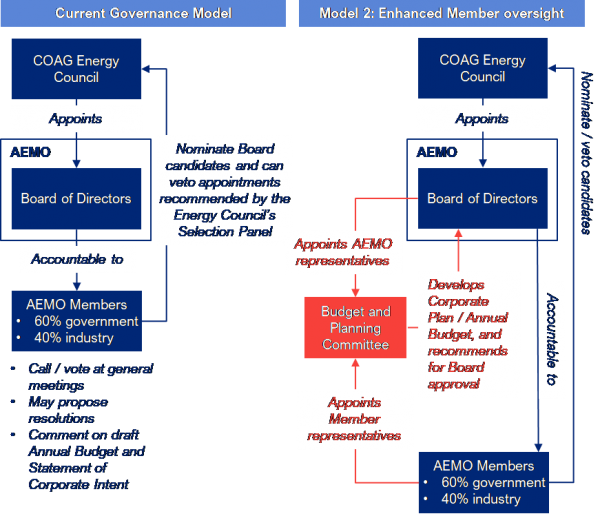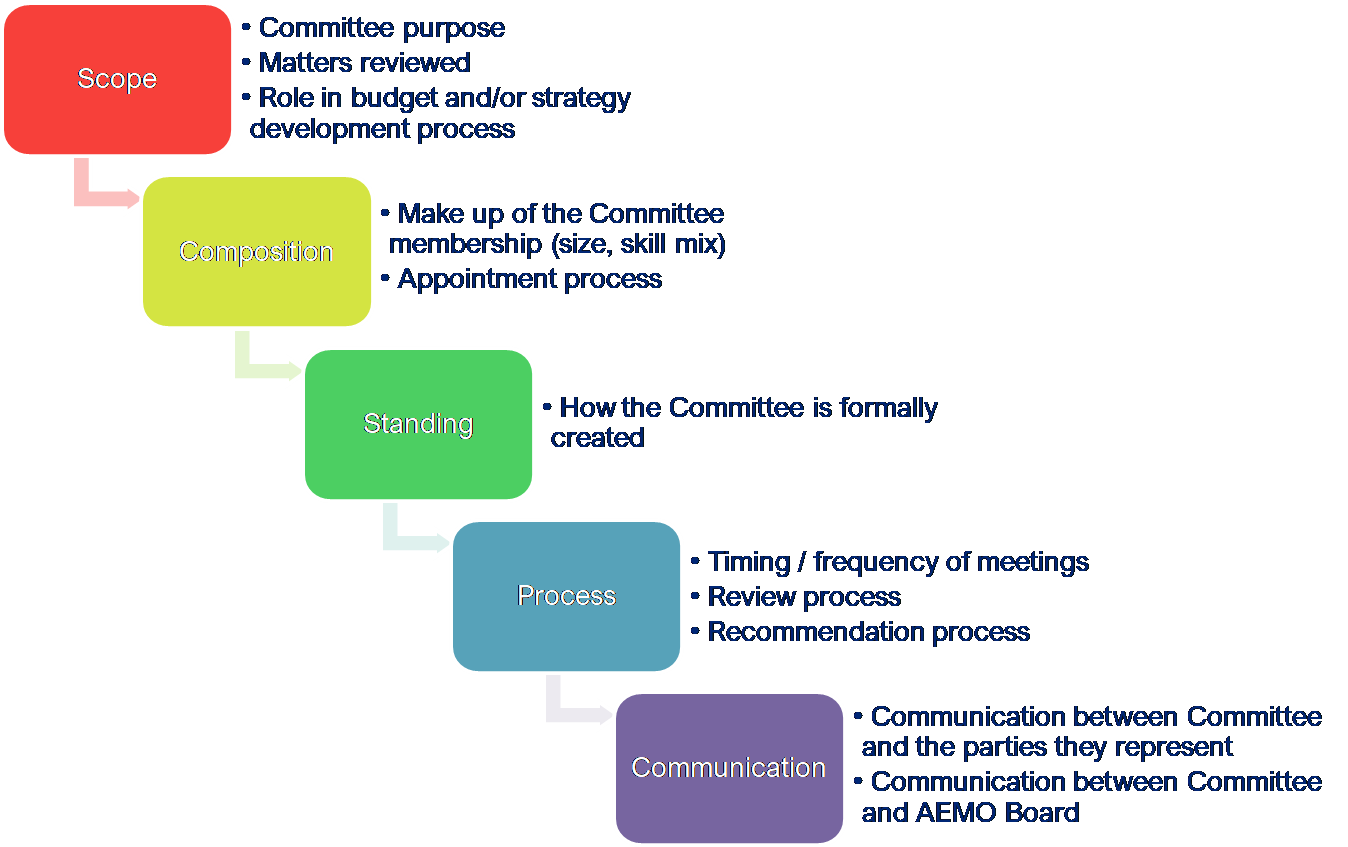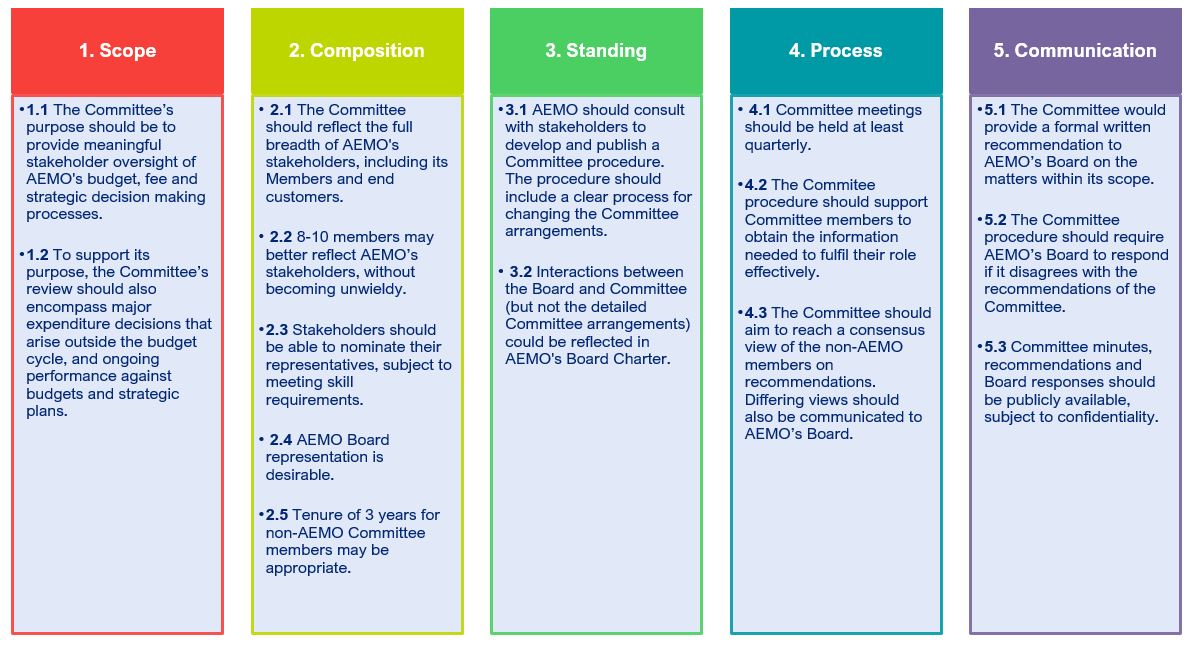Engagement and governance key to success
In July 2020, the Australian Energy Market Operator (AEMO) initiated a process to review its stakeholder engagement model. In November 2020, AEMO published a proposal for a new forum and working group model that would structure its engagement with stakeholders. This proposal included a Budget and Finance Committee (the Committee) that would provide for earlier consultation on AEMO’s budget and fees.
Energy Networks Australia (ENA) and the Australian Energy Council (AEC) engaged leading energy and economic policy and advisory group, Cambridge Economic Policy Associates (CEPA) to provide advice on:
- How the committee could improve accountability to AEMO’s Industry Members and customers, and
- Design options for the detailed committee arrangements, building on AEMO’s proposal.
The report builds on an earlier CEPA investigation published in September 2020, Governance and Regulation of Market/System Operators. This investigated the governance frameworks applying to market system operators in other jurisdictions to inform the development of possible implementation options in Australia.
Context
CEPA’s September 2020 report found that relative to organisations with similar roles, AEMO’s members currently have limited input into developing AEMO’s business plan and its budget. The report therefore outlined three governance model options that could improve the transparency and accountability of AEMO’s governance framework, in particular the strategic and budgetary decision-making processes.
The second of these alternative models – Model 2: Enhanced Member Oversight – provided for the creation of a ‘Budget and Planning Committee’. Model 2 envisaged an enhanced, formal role for AEMO’s Government and Industry Members in the company’s strategic decision-making processes.
Therefore, ENA and AEC welcome and strongly support AEMO’s proposal to introduce a Budget and Finance Committee following its 2020 review of stakeholder engagement. Designed suitably, the Committee will materially increase transparency and accountability with respect to AEMO’s budget and strategic planning purposes.
Scope and approach
Building on AEMO’s proposal, the AEC and ENA engaged CEPA to further consider design options for the detailed Committee arrangements.
ENA and AEC asked CEPA to:
- Consider, and briefly evaluate, how the Committee proposed by AEMO could improve accountability to AEMO’s industry members and customers.
- Advise on key factors that AEMO’s industry members and customers would want to see in the terms of reference for the Committee, should one be implemented by AEMO.
This advice was informed by research into the governance models of similar committees that have been established by five US Independent System Operators (ISOs).
Committee Design
Achieving the correct committee design will be a key component to the enduring success of any budgetary and finance model AEMO lands on.
As a part of its research, CEPA looked to similar committees that have been established in other jurisdictions. The research covered five US Independent System Operators (ISOs)
- ISO New England (ISO-NE),
- The Midcontinent Independent System Operator (MISO),
- New York ISO (NYISO),
- Pennsylvania-New Jersey-Maryland Interconnection (PJM)
- Southwest Power Pool (SPP).
Despite operating under different regulatory arrangements, the US ISOs are all entities that have established committees which possess similar functions to those envisaged by AEMO.
After researching and reviewing the selected ISOs, CEPA suggested five design elements for AEMO to consider when implementing a governance framework for its own budgetary and finance committee.
Figure 3.1: Budget & Fees Committee – Design elements
Where to from here?
Drawing on its research, CEPA has proposed key recommendations guided by each design element. In particular, CEPA found that the design should support the Committee to provide meaningful oversight of budgets and priorities, noting the impact of these on both costs and service levels for end-use consumers.
It is anticipated these recommendations will be a starting point for more detailed discussions between AEMO, its industry members, and other stakeholders, including consumer representatives.
You can read the full CEPA report here




